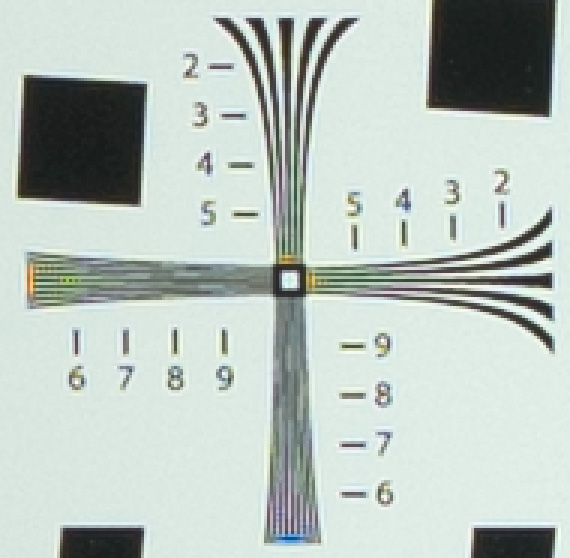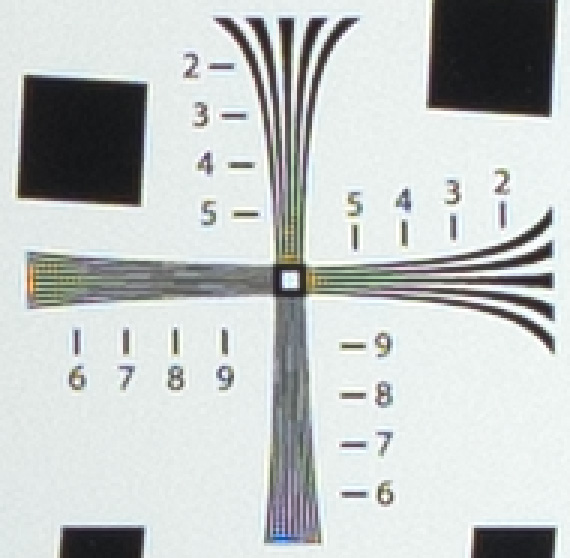A “to do” from some time ago was to verify that the Heliopan ND filter that I’m using for the shutter series testing does not itself introduce unsharpness that would invalidate the conclusions that I’ve been drawing in the previous posts. I’ve been waiting on a flash with shorter duration than my White Lightning X1600s, and now I have a pair of the Paul Buff Einstein 640 watt-second flashes. The Einsteins have a mode where they can vary power output without affecting the color temperature of the output very much. I used that mode in the testing that follows. The Einsteins also exhibit predictable, repeatable shortening of the flash duration as the power level is reduced. They also provide digital control of the power level in tenth-stop increments, a big improvement over the analog controls on the X1600.
For my first test, I put a Leica 50mm f/1.4 Summilux on the a7R with a Novoflex adapter. I mounted the RRS a7 L-bracket to the camera, and mounted that to an Arca Swiss C1 Cube sitting on the RRS TVC-44 legs. I set up the camera at a distance from the ISO 12233 target that gave a target height of about 900 pixels. The Summilux has poor corner performance on the a7R, but great on-axis sharpness, so it was fine in this application. Why didn’t I use the Sony/Zeiss 55mm f/1.8 FE? It probably would have been fine, but I trust the stiff, purely mechanical focusing of the Summilux to stay put throughout a series of pictures, and I haven’t reached that level of confidence with the focus-by-wire 55 FE. I will say that the feel of the ‘Lux, which is fine for rangefinder focusing or handheld live view work, is a little sticky for the ultra-precise focusing I have to do with the ISO 12233 target.
I focused the lens wide open and then set it to f/5.6. I made exposures through the Heliopan variable ND filter set at maximum and minimum absorption, adjusting the flash level to keep the resulting exposure constant. I only used one Einstein, which was set at 1 stop down from a full dump for the maximum absorption, and 8 stops down for minimum absorption. I set the self-timer for 2 seconds, the shutter speed to 5 seconds, and triggered the flash manually about halfway through the exposure.
I processed the raw files in Lightroom 5.3 using the default settings except white balance, which was set to “Flash”, and Exposure.
Here’s the upper right hand “cross” (at 3x using nearest neighbor) at maximum ND filter attenuation:
And here it is at minimum attenuation:
There are no important sharpness differences between these images, although you can see a distinct shift in white balance. It looks like the ND filter is not introducing material lack of sharpness throughout its range.
Whew!
Next up: what happens when the flash is triggered by the camera.


I wonder how front curtain and rear curtain flash would compare and how that comparison would change with a variety of shutter speeds, particularly 1/100sec and something like 1/20sec.
Ferrell, I’ve done some of the testing already, tho’ I’m not done yet. Posts to come…
Jim
Jim, when you do a visual inspection of the cross for vibration does color come into it? Another words, is a specific color an indicator of more or less vibration? Sometimes I see blue other times yellow, I’m not sure what I should glean from this. Thank you.
Ferrell, specific colors are totally useless in analyzing vibration. A while back I did a simulation study where I just shifted the simulated sensels with respect to the target and got wildly different color patterns.
Jim